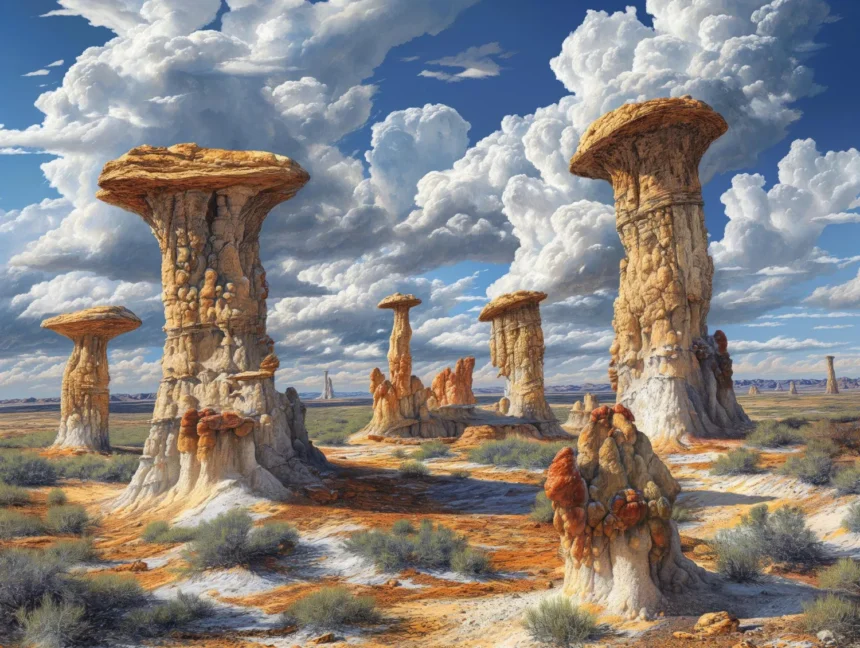Introduction
Nature has an incredible way of surprising us with its unique and bizarre landscapes. From towering rock formations to glowing caves, Earth is home to some of the weirdest looking natural structures that seem to defy explanation. These natural wonders not only captivate our imaginations but also tell us about the powerful geological forces that shape our world.
Some of these structures are the result of millions of years of erosion, while others are caused by unique chemical reactions or other environmental conditions. Whether it’s a waterfall that vanishes into thin air or a lake that glows with an eerie pink hue, these oddities prove that nature’s creativity knows no bounds. In this article, we’ll explore 10 of the most mind-blowing and weirdest looking natural structures found across the globe.
Read also: 24 Astonishing Fun Geography Facts That Will Amaze You!
Top 10 Weirdest Looking Natural Structures
| Wonder | Location | Reason for Being Weird |
| Devil’s Kettle | Minnesota, USA | Water vanishes into a mysterious hole, no known explanation for its destination. |
| The Giant’s Causeway | Northern Ireland | Thousands of interlocking basalt columns formed by volcanic activity, resembling a puzzle. |
| The Wave | Arizona, USA | Striking, wave-like sandstone patterns created by wind and water erosion. |
| Tsingy de Bemaraha | Madagascar | Sharp, needle-like limestone formations that form a labyrinth of jagged peaks. |
| White Sands National Park | New Mexico, USA | World’s largest gypsum dune field with bright white sands instead of traditional quartz. |
| Mount Roraima | Venezuela, Brazil, Guyana | Flat-topped mountain, isolated ecosystem, and inspiration for the movie Up. |
| Blood Falls | Antarctica | A waterfall flowing red water, due to iron-rich brine from beneath the glacier. |
| Waitomo Caves | New Zealand | Glowing bioluminescent glowworms light up the cave’s ceilings. |
| Lake Hillier | Australia | A vibrant pink lake caused by algae that thrive in salty, high-saline environments. |
| Zhangjiajie National Forest | China | Towering sandstone pillars that appear to float, inspiring the floating mountains in Avatar. |
1. Devil’s Kettle – A Waterfall with a Vanishing Act
Location: Judge C. R. Magney State Park, Minnesota, USA
Description: At the heart of Judge C. R. Magney State Park lies the Brule River, which splits to form two waterfalls. One cascades down the riverbank, while the other, known as Devil’s Kettle, funnels into a mysterious hole, leaving visitors and scientists alike puzzled about its destination.
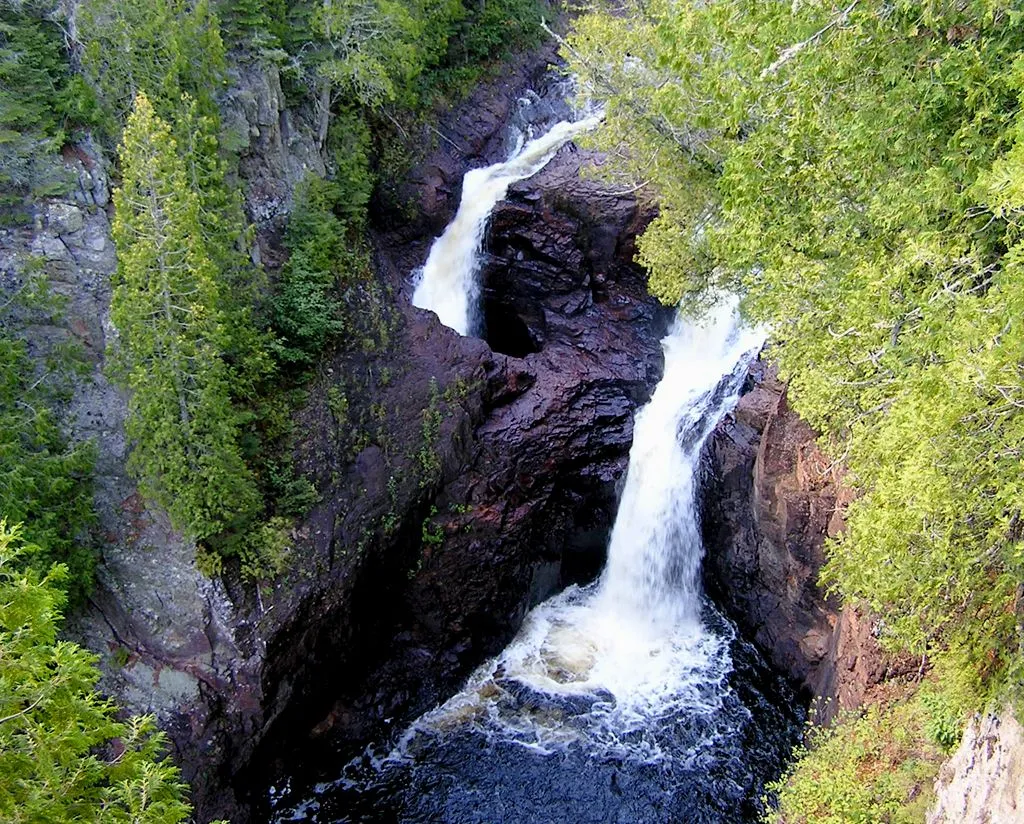
Scientific Insight: Researchers have attempted to trace the water’s path using dyes and other methods, but the exact route remains unknown, adding to the allure and enigma of this natural wonder.
Key Takeaway: Devil’s Kettle exemplifies nature’s ability to intrigue and mystify, reminding us that some of its secrets are yet to be uncovered.
Read also: 10 Landmarks That Should Be Considered Wonders of the World
2. The Giant’s Causeway – Nature’s Perfect Puzzle
Location: County Antrim, Northern Ireland
Description: The Giant’s Causeway is a natural wonder comprising approximately 40,000 interlocking basalt columns, the result of volcanic activity millions of years ago. These columns, mostly hexagonal, create a stepping-stone effect leading from the base of a cliff and disappearing under the sea.
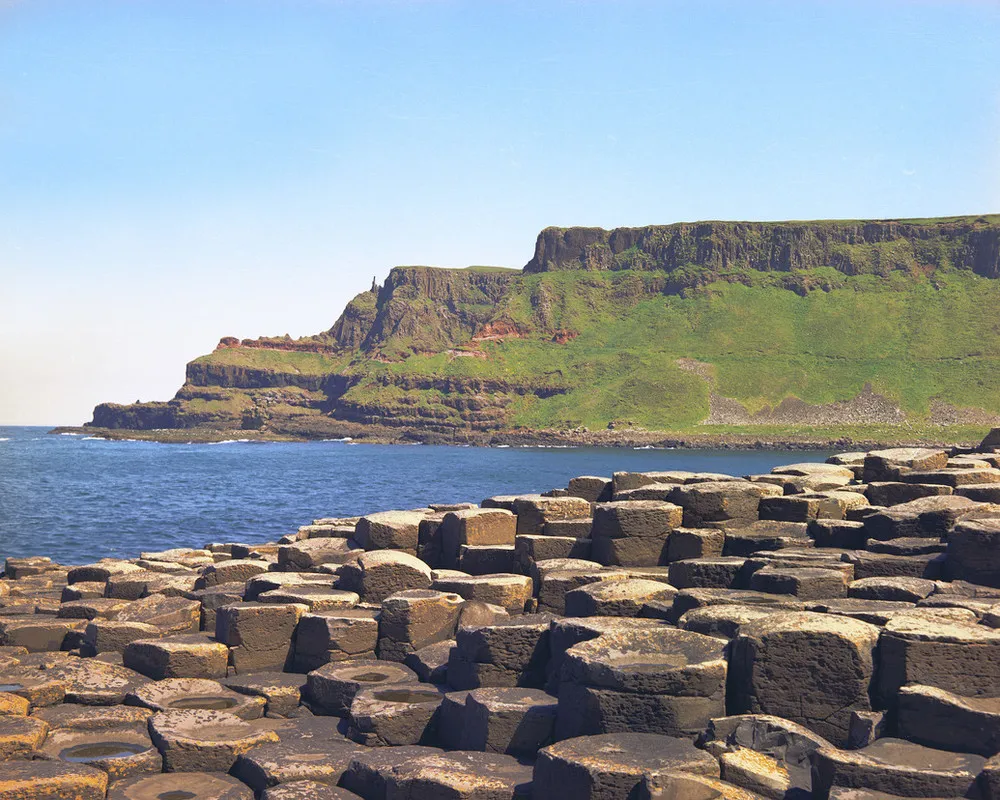
Legend: Local folklore attributes the causeway to the Irish giant Finn McCool, who is said to have built it to reach Scotland.
Key Takeaway: The Giant’s Causeway is an evidence of Earth’s geological history and the captivating tales woven into its landscape.
Read also: Volcanic Eruption Prediction in 2025: 5 Proven Methods for Accurate Forecasting
3. The Wave – Arizona’s Colorful Sandstone Curves
Location: Coyote Buttes, Paria Canyon-Vermilion Cliffs Wilderness, Arizona, USA
Description: The Wave is a sandstone formation known for its undulating, wave-like patterns and vibrant red and orange hues. The intricate curves and layers are the result of wind and water erosion over millions of years.
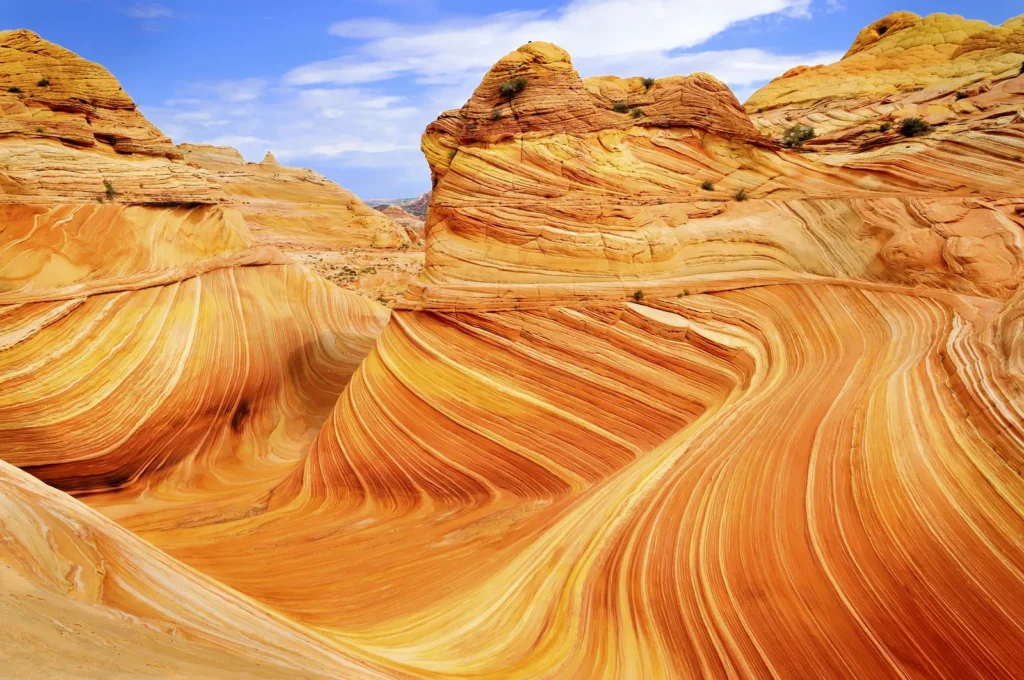
Access: Due to its popularity and the delicate nature of the formation, access is limited, requiring a permit obtained through a lottery system.
Key Takeaway: The Wave showcases the mesmerizing patterns and colors that can emerge when natural forces sculpt the land over time.
Read also: 10 Deepest Canyons in the World That Will Leave You in Awe
4. Tsingy de Bemaraha – Madagascar’s Forest of Pinnacles
Location: Melaky Region, Madagascar
Description: Tsingy de Bemaraha is a UNESCO World Heritage site featuring a forest of limestone needles, known locally as “tsingy.” These sharp, needle-like formations create a labyrinth of rock, offering a unique and challenging terrain for explorers.
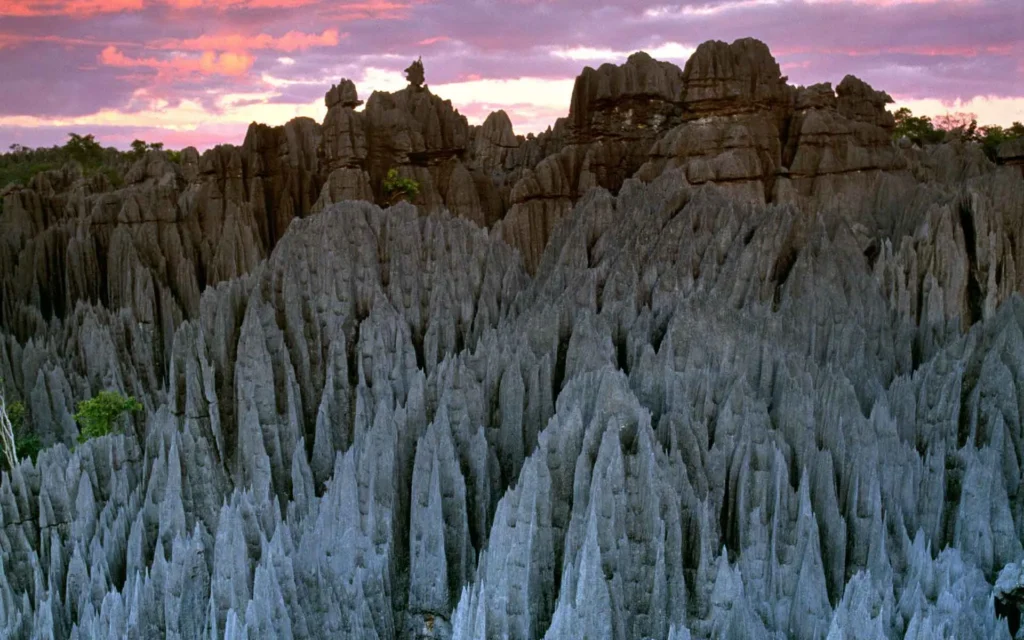
Biodiversity: The area is rich in endemic flora and fauna, adapted to the harsh environment created by the tsingy formations.
Key Takeaway: Tsingy de Bemaraha exemplifies Earth’s capacity to create unique and diverse landscapes, fostering distinct ecosystems in the process.
Read also: Karst Topography: Discover 5 Bizarre Landscapes Formed by Dissolving Earth
5. White Sands National Park – The World’s Largest Gypsum Dunes
Location: New Mexico, USA
Description: White Sands National Park is home to the world’s largest gypsum dune field, covering approximately 275 square miles. The white sands are composed of gypsum crystals, which are rare in dune formations, giving the area its distinctive color and texture.
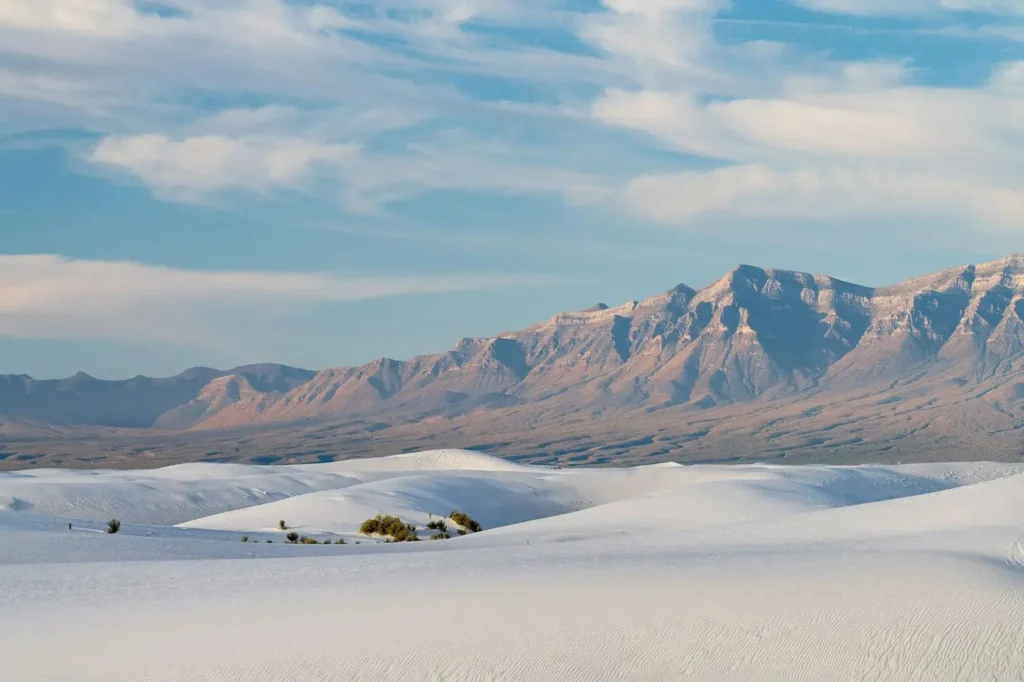
Formation: The dunes formed over thousands of years as water from the surrounding mountains carried gypsum to the Tularosa Basin, where it crystallized and was shaped by wind into the expansive dunes seen today.
Key Takeaway: White Sands acts as a striking example of how unique geological conditions can create otherworldly landscapes.
Read also: How is the West Australian Desert Formed?
6. Mount Roraima – The Inspiration Behind ‘Up’
Location: Venezuela, Brazil, and Guyana
Description: Mount Roraima is a tabletop mountain, or tepui, characterized by its flat top and steep, cliff-like sides. Rising about 9,094 feet above the surrounding rainforest, it inspired the setting for the animated film “Up.”

Ecology: The isolated summit hosts unique ecosystems, with many species found nowhere else on Earth.
Key Takeaway: Mount Roraima’s distinctive features highlight Earth’s geological diversity and the inspiration nature provides to human imagination.
Read also: 7 Incredible Facts About the World’s Highest Mountains by Continents You Should Know
7. Blood Falls – Antarctica’s Mysterious Red Flow
Location: McMurdo Dry Valleys, Antarctica
Description: Blood Falls is a five-story waterfall that pours from the Taylor Glacier into Lake Bonney. Its red hue is caused by iron-rich, oxygen-free water. The water’s color intensifies upon exposure to oxygen, creating the striking appearance.
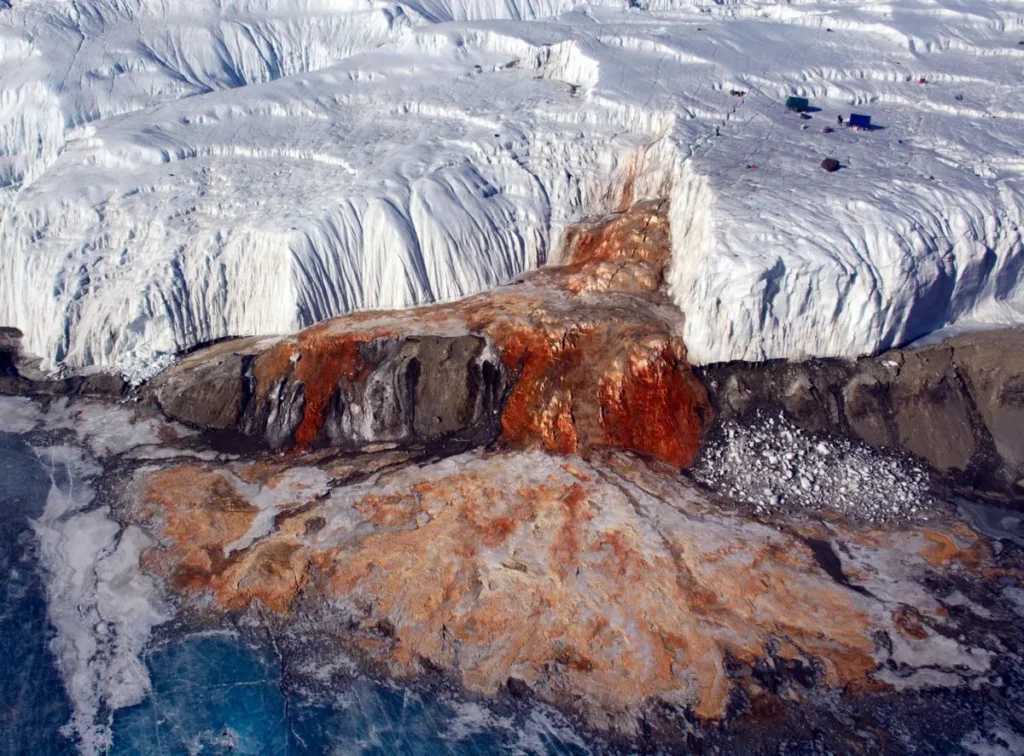
Discovery: Scientists have studied Blood Falls to understand microbial life in extreme conditions, offering insights into potential life on other planets.
Key Takeaway: Blood Falls offers a rare glimpse into life in extreme conditions, and its vivid red flow continues to intrigue scientists and explorers alike. This mysterious natural structure stands as a symbol of the hidden wonders beneath Earth’s icy surface.
Read also: Antarctica from Space: A Visual Story of a Continent in Crisis
8. Waitomo Caves – New Zealand’s Glowing Underground World
Location: Waitomo, New Zealand
Description: The Waitomo Caves are famous for their mesmerizing glowworms that light up the cave’s ceilings, creating a starry-like effect underground. The glowworms, Arachnocampa luminosa, emit bioluminescent light to attract prey, making these caves one of New Zealand’s most extraordinary natural wonders.
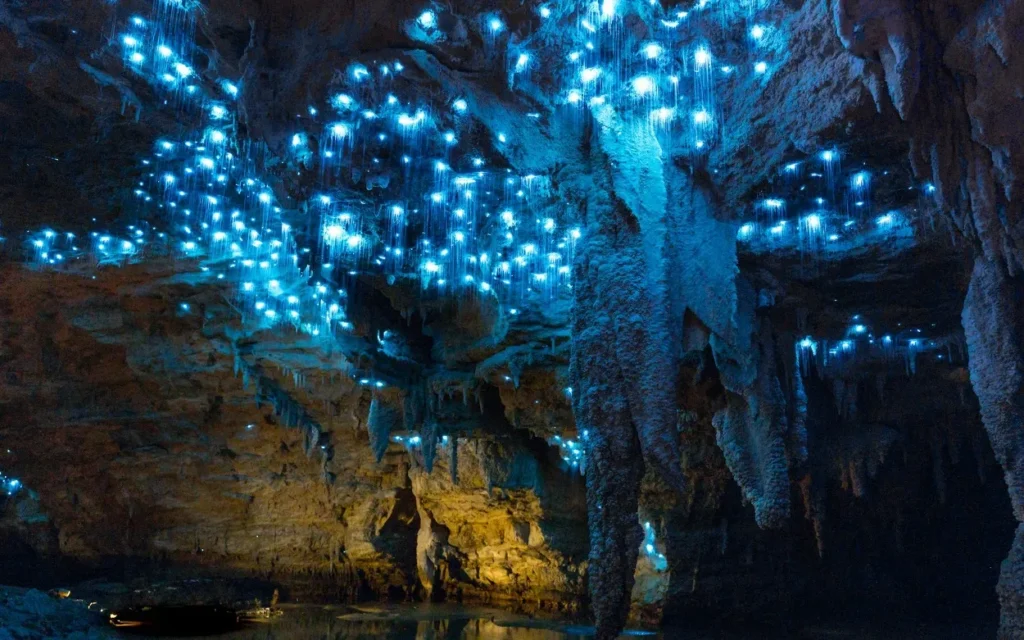
Scientific Insight: These caves are not just visually stunning but also ecologically significant. The glowworms create a unique ecosystem, thriving in the dark, humid environment of the cave, where they spin silk threads to trap small insects.
Key Takeaway: Waitomo Caves highlights nature’s ability to create beauty in the most unexpected places, proving that even in the darkest environments, life finds a way to shine.
Read also: Unveiling the Mystery of Giant Sinkholes: Ancient Forests Hidden in China’s Heavenly Pits
9. Lake Hillier – Australia’s Enigmatic Pink Lake
Location: Middle Island, Western Australia
Description: Lake Hillier is one of the world’s most unique natural structures due to its bright pink color. The lake is surrounded by a rim of white sand and lush vegetation, creating a striking contrast. The pink color is believed to be caused by the presence of Dunaliella salina, a type of algae that produces a red pigment when exposed to high salinity.
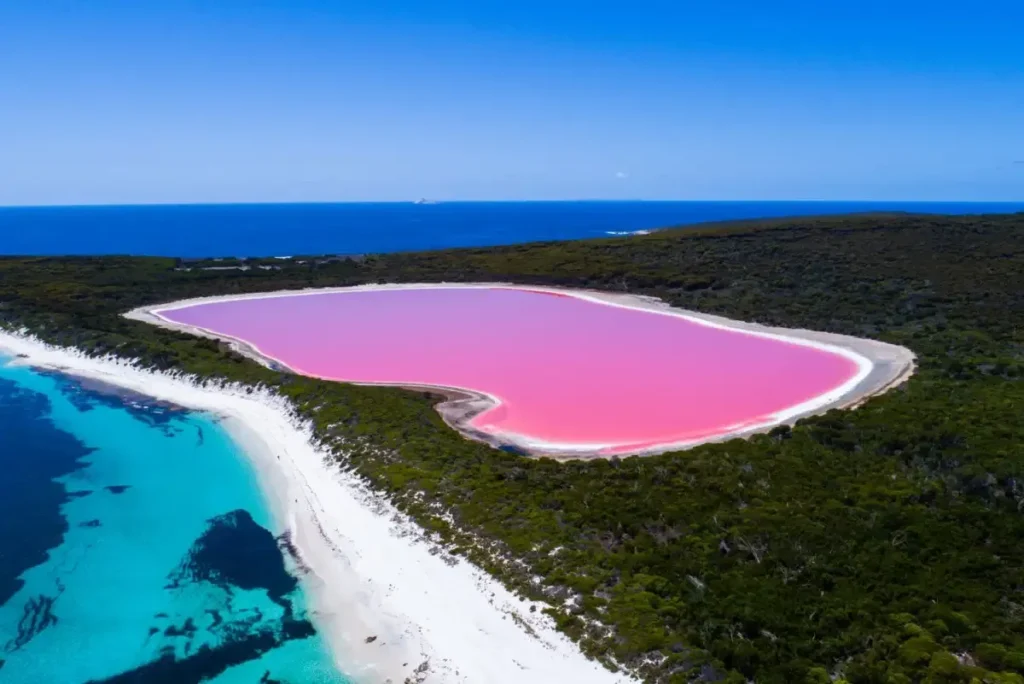
Scientific Insight: Although the exact cause of the lake’s vibrant color is still debated, scientists suggest that the combination of high salinity and specific bacteria or algae contributes to this extraordinary phenomenon.
Key Takeaway: Lake Hillier’s surreal appearance reminds us of the wonders that nature can create in ways we don’t fully understand.
Read also: 10 World’s Deepest Lakes: The Most Stunning Abyss of Nature
10. Zhangjiajie National Forest Park – China’s Floating Mountains
Location: Zhangjiajie, Hunan Province, China
Description: Zhangjiajie National Forest Park, with its towering sandstone pillars, is best known for inspiring the floating mountains in James Cameron’s Avatar. The park’s unique landscape, shaped by years of erosion, features more than 3,000 vertical pillars that rise dramatically from the ground. These formations are often shrouded in mist, enhancing the illusion of floating mountains.
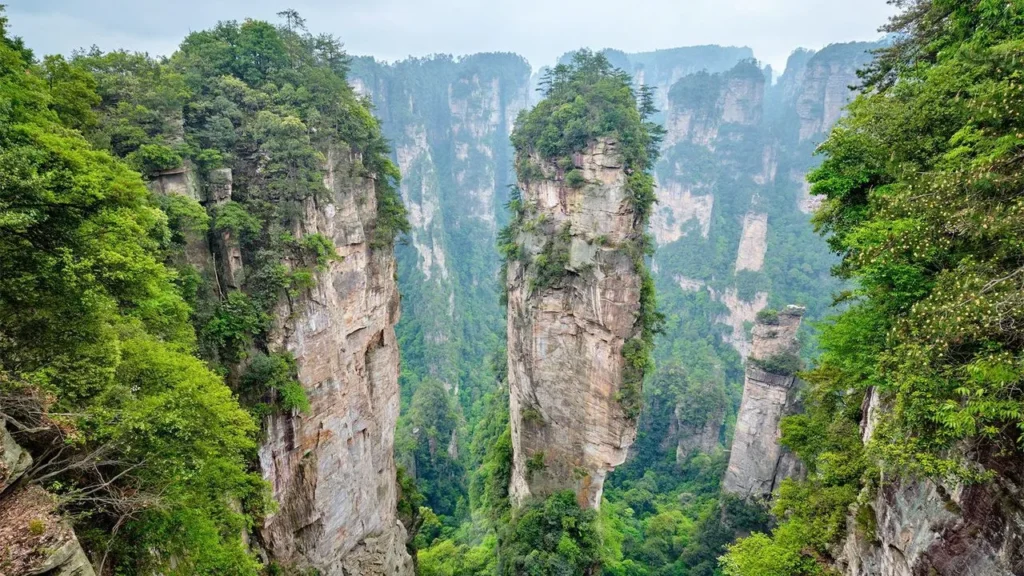
Scientific Insight: The formations are the result of long-term erosion and weathering, as well as the collapse of rock due to seismic activity. These towering peaks are a testament to the power of natural forces over millions of years.
Key Takeaway: Zhangjiajie National Forest Park is a captivating example of how nature’s art can spark imagination and inspire creativity in unexpected ways.
Why Called Weird
The term “weird” for natural structures doesn’t come from a specific formal organization but rather from a combination of popular culture, scientific curiosity, and unique geological features. However, there are several scientific and cultural criteria that can be used to label a natural structure as “weird.” These criteria are primarily subjective and often based on public perception and the uniqueness of the feature. Here are some of the criteria:
1. Unusual Appearance
- Criterion: The structure has a striking or visually surprising appearance that differs from typical landscapes.
- Example: The vibrant pink color of Lake Hillier or the hexagonal basalt columns of the Giant’s Causeway.
2. Unexplained Phenomena
- Criterion: The structure exhibits phenomena that remain unexplained by current scientific understanding.
- Example: Devil’s Kettle, where the waterfall disappears into a hole, and the destination of the water is still unknown.
3. Rare Geological Processes
- Criterion: The structure has been formed by geological processes that are uncommon or unusual.
- Example: The Tsingy de Bemaraha’s needle-like limestone spires are the result of unique weathering processes.
4. Mythology and Local Legends
- Criterion: The structure has inspired myths or legends that associate it with supernatural or strange origins.
- Example: The Giant’s Causeway, linked to the myth of the Irish giant Finn McCool.
Read also: 10 Rare Celestial Omens That Sparked Awe and Fear Across Cultures
5. Environmental Anomalies
- Criterion: The site exhibits unusual environmental conditions, such as bioluminescence, extreme salinity, or isolated ecosystems.
- Example: Waitomo Caves, known for their glowing glowworms, or Mount Roraima’s isolated, unique ecosystem.
6. Impact on Public Imagination
- Criterion: The structure has captured public attention due to its weird, otherworldly, or science fiction-like appearance.
- Example: Zhangjiajie National Forest Park, which inspired the floating mountains in the movie Avatar.
While no formal organization specifically designates structures as “weird,” they often gain this title through a combination of scientific curiosity, unique attributes, and cultural fascination.
Read also: Top 10 Strangest Landforms Around the World
Final Thoughts
After exploring these ten weirdest looking natural structures, it’s clear that nature has a remarkable way of creating some truly mind-blowing landscapes. From the mysterious Devil’s Kettle to the glowing Waitomo Caves, these sites showcase the incredible diversity of Earth’s natural wonders. Whether caused by volcanic activity, erosion, or even the activity of microscopic organisms, each formation offers insight into the forces that shape our planet.
These unique rock formations and bizarre landscapes are the signs that the Earth is a living, breathing entity, and constantly evolving and surprising us with new creations. Whether you’re an adventurer, a scientist, or simply a lover of natural beauty, these weirdest looking natural structures are a must-see, proving that sometimes the most extraordinary things are found in nature’s most unexpected places.
Exploring these geological wonders provides not only a sense of awe but also the opportunity to learn about the processes that have shaped our world. Nature, with all its oddities, continues to challenge our understanding and keep us wondering about the mysteries that remain hidden within its depths.
FAQs
1. What causes the red color of Blood Falls?
The red color of Blood Falls is due to iron-rich water from a subglacial lake reacting with oxygen.
2. Why is Mount Roraima flat-topped?
The flat of Mount Roraima is a result of millions of years of erosion, creating a unique plateau.
3. What makes Lake Hillier pink?
The pink color of Lake Hillier is believed to be caused by algae that thrive in high-salinity environments.
4. Why do glowworms glow in the Waitomo Caves?
Glowworms emit light to attract prey, creating a stunning visual effect inside the caves.
5. How did the Giant’s Causeway form?
The Giant’s Causeway formed through volcanic activity, where basalt cooled rapidly and cracked into hexagonal columns.


